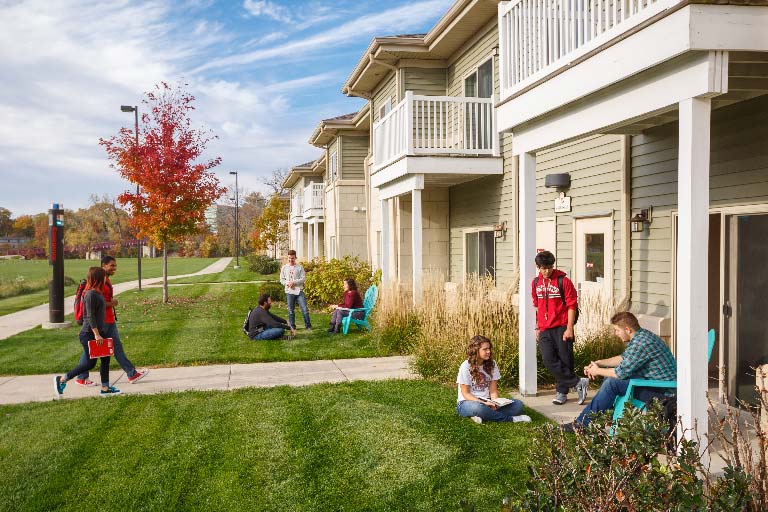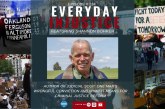
I missed the Planning Commission meeting this week due to the Vanguard event on homelessness – ironic because one of the points Mayor Robb Davis made is that, while there are visible homeless in the community, there is also a group of non-traditional homeless-like students who live in their cars or go couch surfing.
The city of Davis had not approved market rate student housing in over a decade before it approved Sterling. While student housing is not the only crisis facing the housing market in the community, it is the worst and most urgent.
I find comments, like the one I read from Planning Commission Vice Chair Marilee Hanson, disconcerting. When discussing Lincoln40 she said, “I’m concerned that it’s a single-use kind of project.
” … Projects like this and the Sterling (Apartments) are taking up all the land in town that is zoned for housing, and they are being taken up with a design that will never be affordable or attractive to working people, families,” she said.
But it provides housing for one key group – students. And given our 0.2 percent vacancy rate and plans to expand enrollment, that is by far the greatest need. So to look at a project that fills a portion of our greatest need and to criticize it because it doesn’t accommodate other needs is letting the perfect be the enemy of the good.
But this illustrates in my view a need to find realistic solutions to the housing crisis. I neither believe we should blow up Measure R nor do I believe that we can simply transfer all our housing needs to the UC Davis campus to solve our problems.
Housing is a difficult issue for Davis and it is only going to get worse. The question is, given current political realities, what can we do and what should we do.
All one needs to do is look at San Francisco and Silicon Valley to realize where we are probably headed if we don’t figure out ways to change the current trajectory. I don’t say this lightly. But renting a two-bedroom house or apartment at $3000 is not feasible.
The Bay Area has physical limitations that make it difficult to build a great deal of new housing. On the other hand, as many have pointed out, Davis has artificially and rather intentionally imposed limitations upon itself.
As a commenter recently noted: “We have complete control over how we address our housing crisis, because the limits are entirely self-imposed. There aren’t steep hills or shorelines that physically limit where we go, and there aren’t large publicly owned tracts that prevent expansion.”
I continue to believe that at some point the pressure is going to build up so much that the dam will burst. I don’t know how or when that will happen, but at some point, whether it is demographic shift or market pressure, I think we will see massive change – if we do not find a middle ground between the current housing policies and exploding our borders.
That is not something I am in favor of. I very much find myself in the middle ground here, but at some point, the center cannot hold.
I see two emerging viewpoints here.
One, as articulated by Ron Glick, is basically that Measure J/R has greatly increased the value of land inside the line and has led to conflict.
“What’s driving everything,” he said, in the risk to people – in the mobile home park with Sterling, in Trackside and in the B Street project, “all of these things is Measure R because we can’t spread out.
“If we can’t spread out, what are we going to do? We have to do infill. As long as we have this limit line – conversion on ag land is $15,000, Sterling $1 million an acre.” He said that “because of Measure R, land inside the line is now worth 100 times land outside of the line.”
On the other end of the spectrum, people like Eileen Samitz acknowledge that we need housing but put the blame on UC Davis for driving student enrollment growth. For them, the answer is put the housing on campus.
My problem is as follows. First, does UC Davis need to put more housing on campus? Of course. I have been a consistent advocate of the 100/50 plan, as has the city council.
My problem is that there is a greater need for rental housing than just what can be met on campus, even if UC Davis goes to 100/50. And I don’t think they will go to 100/50. There is also the need for more staff housing, as Dave Taormino points out in his letter we have published this week.
This also ignores the job growth, not only at the university but in the city and the region. UC Davis may be the biggest driver for growth demand in the community, but it is hardly the only. Davis was growing quite fast in the 80s and 90s without the threat of massive growth from UC Davis.
I think in a way people like Roberta Millstein understand this problem, which is why she has taken the stance that building an innovation park, with its 6000 or so projected jobs over a 20- to 50-year period, will only increase the upward pressure on home prices.
This is what we are left with. We are left with the argument that we should create a de facto city of 10,000 to 20,000 students and faculty on campus but not in the city. And we should fight against new jobs because it will increase the need for housing or increase the cost of housing.
At some point, putting housing on campus means the campus will have to develop other infrastructure and retail and commerce. We will have strains on our services and resources from people who are not paying taxes in our community and are not part of its governance structure.
While I agree with many that the university needs to do more, we have to be mindful of what that will look like and acknowledge that jamming huge amounts of people onto our periphery on university land is just as problematic as adding them to our city land – maybe even more so.
I have long been an opponent of peripheral housing, but we need to figure out a way to preserve our great community and, in order to preserve our community, we are now about to destroy it. We need to figure out a way to get housing here and not turn Davis into Silicon Valley East.
It’s a challenge and I don’t have great answers, but the current course of action is not working. If we could all work together, maybe we could come up with a solution that we can all live with – before it becomes too late.
We are going to be hosting a series of community conversations on this, coming up, and hopefully we can find a measure of common ground and a way forward from a crisis that could very well consume us.
—David M. Greenwald reporting







A… real “artificial” is the huge subsidy for automobile transport that enables sprawl. But – again – we can’t have our dark underbelly cake and eat it, too: We have to go up if we don’t go out. It’s just a different dimension, isn’t it? What are the costs of adding a story to a house – Yes, everyone adds a story so everyone’s maximizing of the value of land is distributed equally! – vs. building same at the periphery? What can we do to incentivize the conversion of garages into extra rooms or studios? I am not in love with the “tiny houses” solution but can we use them – very tiny versions that share a communal kitchen at the end of a block – to fill-in the widest neighborhood streets (with the added value of lowering the design speed, which we say we don’t have funding to do in the normal way… i.e. developers will pay for it incidentally as the city sells these micro-plots or narrow linear street spaces…)
What if we declare this an “emergency” and tickle* PG&E into hopping and skipping over to a location with direct freeway access as we stroke* the huge shopping center parking lots and Downtown parking craters into excited dense utilization?
* Eminent domain. Please don’t tell me that our lawyers are anything but the best. They could practice by forcing UC Davis to slow admissions while we all catch up. YES! This is extremely optimistic but it’s the job of deep visions to increase the actual amount of realized good (this is perhaps a little more empowering than “perfect is the enemy of the good?)
We’re not getting PG&E’s land through eminent domain. PG&E also has eminent domain power, and the City can’t make a compelling case that it needs the land when it can simply vote “yes” on Measure R projects to create more land. Again, holding our breath isn’t a solution.
I like the solutions of densification, but those are facing the same opposition as peripheral development. There are solutions, but people need to be rational and move beyond their self interest.
(And I’m the commentor quoted here.)
David brings up many good points. Like him, I don’t have any answers, but some observations. First, he wrote: “At some point, putting housing on campus means the campus will have to develop other infrastructure and retail and commerce.” Well, that’s exactly what USC is doing with its new housing and retail center that will welcome students to campus in the next month or so. Take a look at the USC website. There’s a great drone view of it showing large buildings with retail and other services on the ground floor. Some alumni contributed millions to help kick-start the project. It could be a good model to follow here.
Interesting article this week in Wall Street Journal. Firms like Charles Schwab are leaving SF for lower price office space and housing in Denver.
Why is it a good model to have students and staff and faculty spending their money on campus?
That would be my concern as well. I have suggested that Nishi go the way of USC Village, but Nishi would be in town and therefore benefit the city. I’d like to study more about the impact of unincorporated development on Chico. I don’t know enough about it to really weigh in on it right now.
Note that USC is a private, not public, entity and is probably retaining the profits for its endowment. Also, USC is located within a community that has limited commercial outlets of the type that its student body prefers (OK, I’m trying to avoid getting into more commentary on that situation.)
“I’m concerned that it’s a single-use kind of project … Projects like this and the Sterling (Apartments) are taking up all the land in town that is zoned for housing, and they are being taken up with a design that will never be affordable or attractive to working people, families,” she said.
This is the type of static thinking that prevents us from finding solutions. The fact is that by building these projects (as well as on campus housing), we take students out of existing single-family dwellings that then become available for “working people, families.” Too many people can’t see the connections that lead to the desired outcomes.